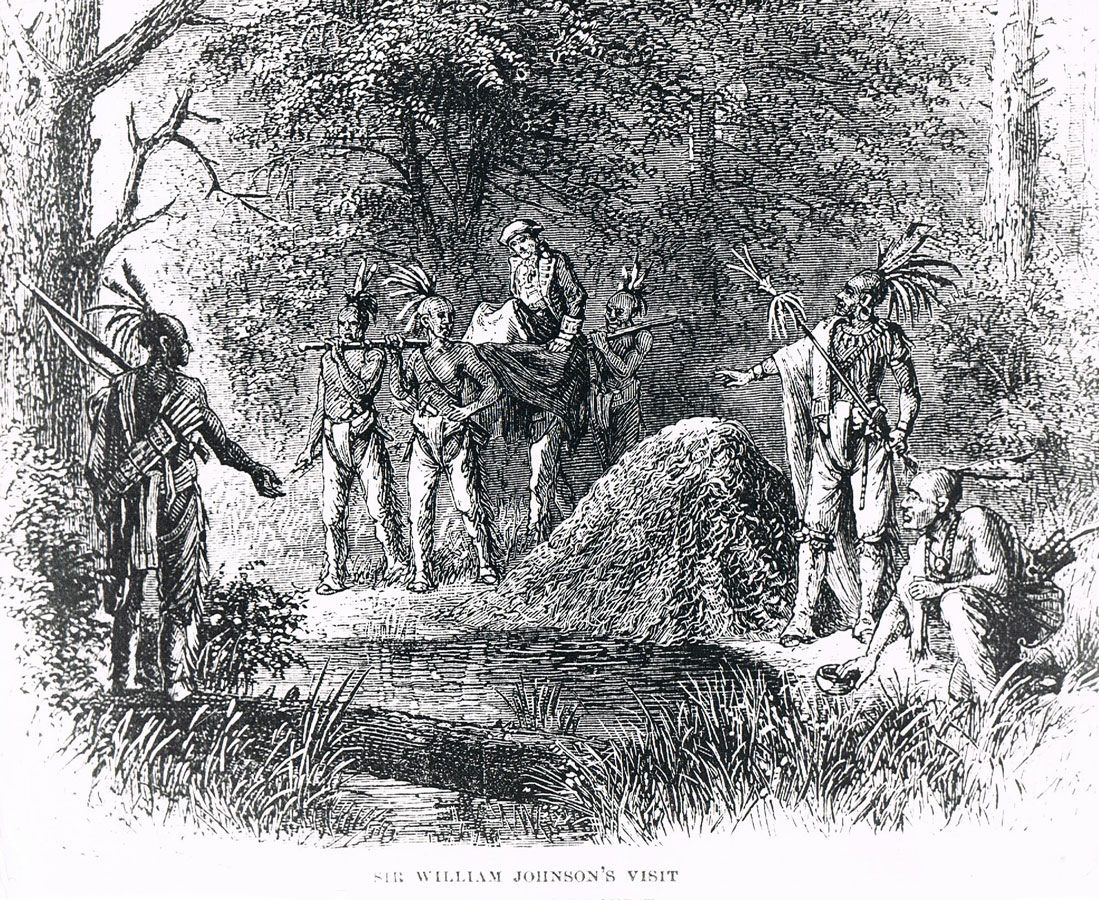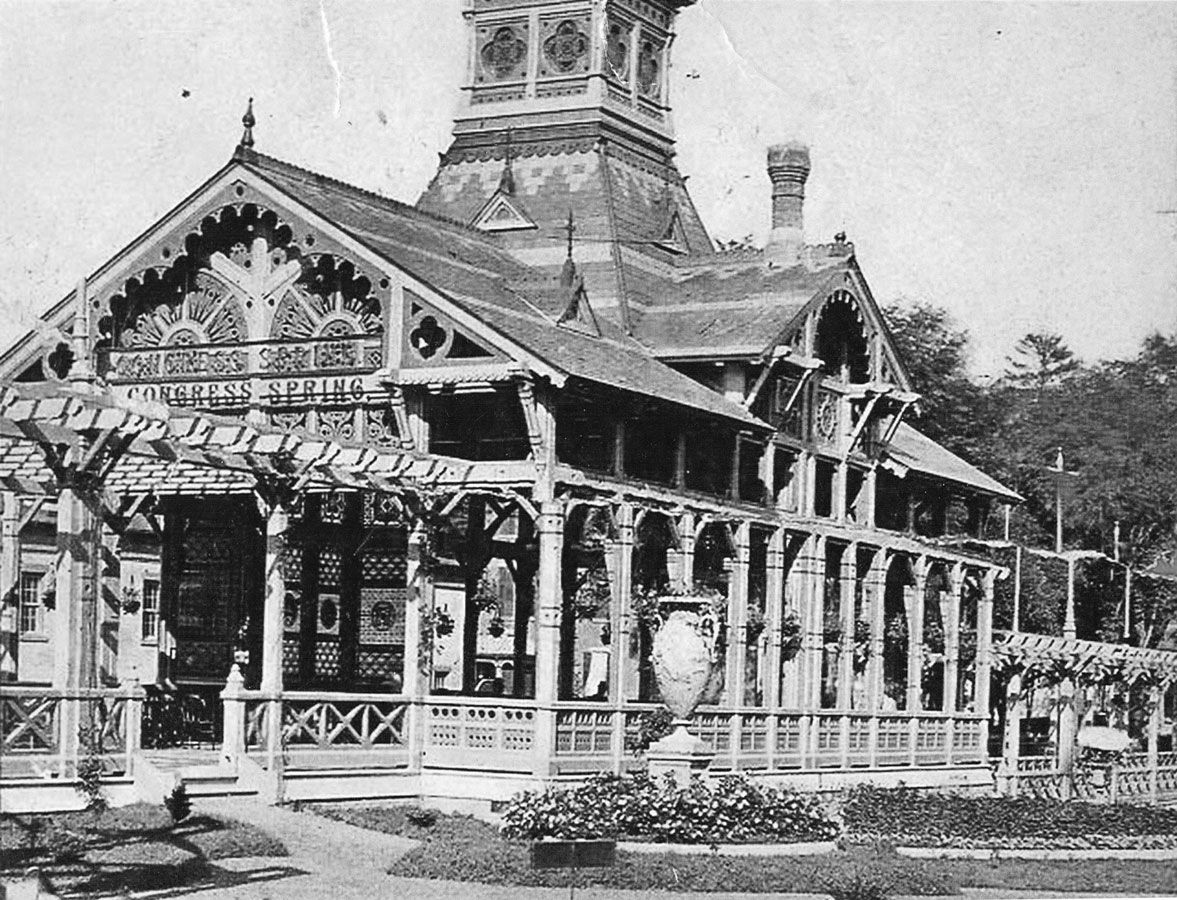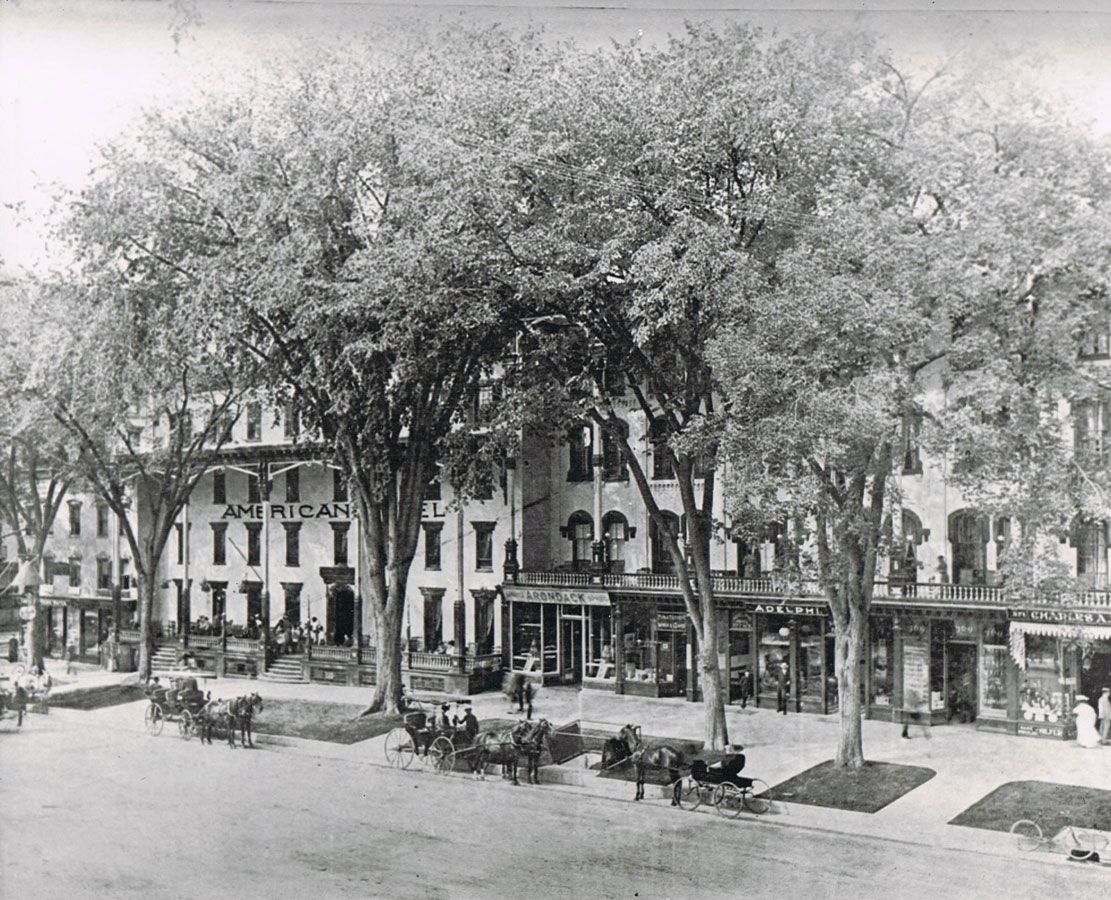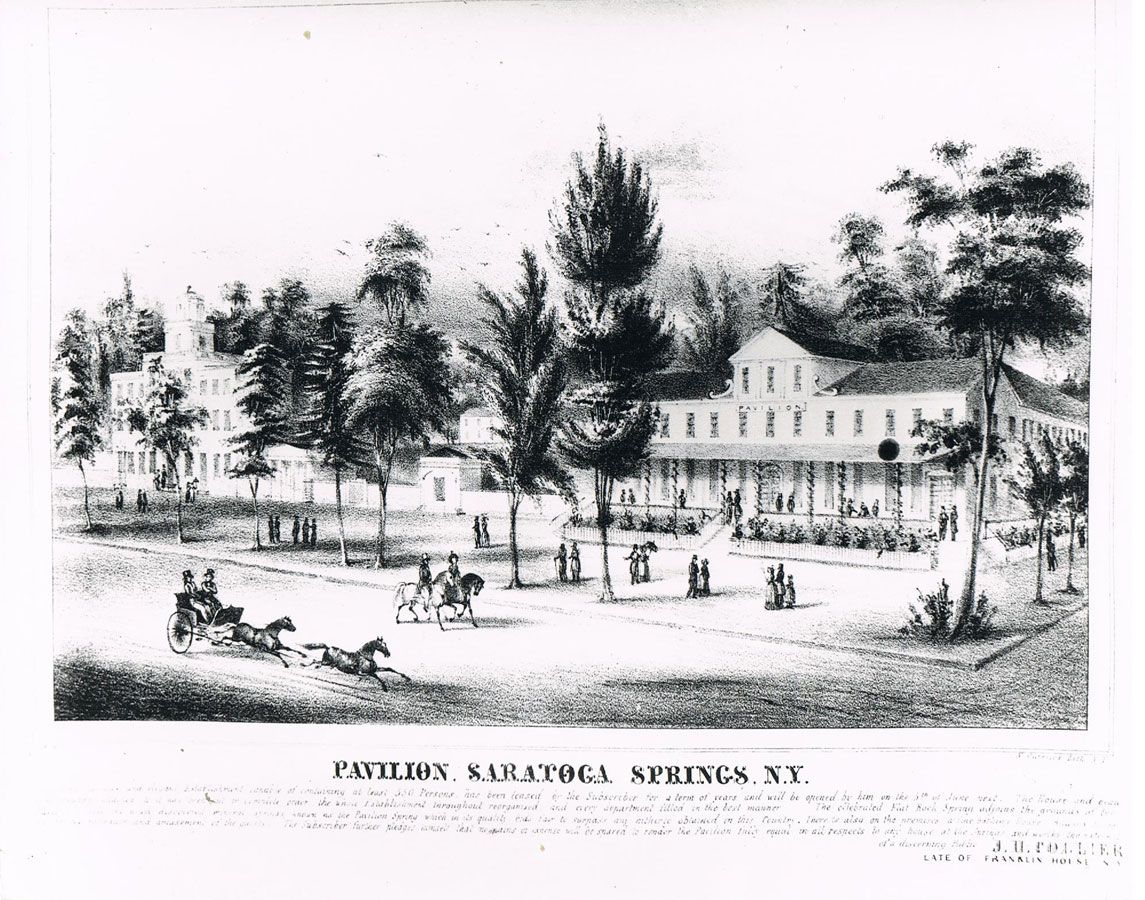

Every city has a story, and every story has a beginning. The story of Saratoga Springs starts long before it was known as the “The Place to See and be Seen.” Centuries before the thousands of summer guests visited the grand hotels and drank the famous mineral waters the Native Americans of this area, the Mohawk, used the springs, planted crops, and hunted the fields and forests of the area.
The Mohawk had named this area “Sarach-to-gue” which to them meant the area of the great salt springs or the hillside of the great river. A city would not be found in this area for centuries until permanent European settlers came to the area in the later years of the 1700s. On November 2, 1708 Queen Anne, of England, granted 13 people land with the royal act called the Kayaderosseras Patent. According to the Mohawk, the name Kayaderosseras, meant “the country of the lake of the crooked stream,” and of course that crooked stream is what we now call, the Kayaderosseras Creek; that flows into Saratoga Lake. This patent was for a huge tract of about 400,000 acres of land that was located west of the Hudson River and north of the Mohawk River. The tract was not awarded until years later when it was somewhat reduced in size and finally surveyed in 1769-70 and broken into 25 allotments with 23 allotments that are each divided into 13 equal lots.
Two of the 25 allotments plus a five-mile square of land (5,029 acres) was given as payment to the surveyors and others that helped with the surveying and conveyance of the land. On October 22,1771 at the Brock Tavern in New York City, the grantees drew lots to determine ownership of the 13 lots in each of the 23 allotments. The most important allotment to Saratoga Springs’ history was lot #12 of the 16 allotments that would become most of the land making up the city today. Lot #12 was drawn in the name of Rip Van Dam and was 2,800 acres in size. When all 23 allotments were divided, Rip Van Dam had received about 30,000 acres which is the equivalent of 46.875 square miles of property. Since Rip Van Dam had died in 1749 the land went to his heirs.
The original thirteen patentees were Johannes Beekman, Rip Van Dam, Anne Bridges, Nanning Hermance, John Tudor, Johannes Fisher, Joris Hooglandt, John Stephens, John Tatham, Adrian Hooghlandt, Peter Fauconnier, May Bickley and Sampson Broughton. When the land was being surveyed it was a piece of the then very large Albany County. Saratoga County was not formed until February 7, 1791.
The area of the present-day city of Saratoga Springs was very sacred to the Mohawk mostly because of the healing waters that flowed from the springs. The Mohawk kept the waters of the High Rock secret and protected it from visitation by area settlers. The High Rock spring was referred to by the Mohawk as “The Medicine Spring of the Great Spirit.” The story is that it was not until 1771 that the Mohawk allowed the first European to visit the area to take the waters. In that year an ill Sir William Johnson, who served as Agent for Indian Affairs for the British, was carried by the Mohawk on a litter to visit what many believe was the High Rock Spring. In Sir William’s account of the event, he refers to visiting a spring “northward of Schenectady.” Since the Mohawk respected Johnson as a friend and they knew he had been suffering from a lingering illness that they felt could be remedied with the use of the waters at a spring, they probably brought him to the High Rock. During his stay of four days at the spring, he drank and bathed with the waters and at the end of those days he felt stronger and walked most of the way back to his house in the Mohawk Valley. Soon after his arrival home he wrote to friends to tell the amazing story of the curing powers of the High Rock.
New knowledge of the mineral springs began a strong push by interested settlers to be able to buy land in the area and build near the springs. After deals with the Mohawk were arranged, the first area of the city to be settled was around the High Rock Spring which became known as the Upper Village. The city’s first permanent settler to the Upper Village was Alexander Bryan in1787. Eventually settlers would also build in the area around the Congress Spring that was discovered in 1792 and that became known as the Lower Village. Over time the two villages would grow to be one with the name Saratoga Springs.
When Gideon Putnam and his wife Doanda came to Saratoga Springs in 1789, the path of the city changed forever. They immediately began to see the wealth potential from harvesting the timber of the area and understood the concept of the saying “If you build it they will come.” Gideon built a sawmill and began to turn the native white pines into shingles, shakes and barrel staves. Gideon later recognized that the mineral springs were a draw for tourists to come to the city for their health. At first, Gideon and Doanda leased land and as their wealth increased, they bought 300 acres of land to start the Lower Village near the Congress Spring. He would build the first hotel in 1802, called Putnam’s Tavern and Boarding House, located on the northwest corner of Broadway and Congress Street. Area residents laughed at his initiative since the land around the boarding house was really in an unsettled thick pine forest with no other settlers in the immediate area.
As the Putnams’ success continued they continued to buy land, built a bath house, tubed the springs and donated land for a church, school and burial ground. Gideon and his wife Doanda laid out the early streets of the city including Broad Street at a width of 120 feet, to be later called Broadway. Washington Street and Phila Street were named after Putnam children. The Putnams’ vision changed the city forever.
One year after Putnam’s Tavern and Boarding House was opened, Gideon added an addition to the hotel because of its successful first year of operation. Eventually the expanding Tavern and Boarding House became known as Union Hall. The Putnam family owned the hotel until 1865 when it changed its name upon change of ownership to the Grand Union. By the 1870s the Grand Union would be one of the largest hotels in the world. In 1811 Gideon starts construction of another hotel across the street from the Union Hall and called it the Congress Hall. Unfortunately, Gideon fell from the scaffolding during construction and died in December of 1812. Doanda lived until 1835 and was a tremendous force in not only keeping the family together but in the daily business operations of two major hotels and assorted properties. A New York City social writer commented in his column after a visit to the Union Hotel, “I can’t understand if the name of Union Hotel describes the national union of the states or the quality of the Putnam family.”
Before Gideon died, he posted a list of the “rules of the springs.” It was Gideon who set forth the idea that the water would always be free at the spring. This custom set the stage for the social patterns for summer visitors for the rest of the 19th century and made Saratoga Springs a very different social experience from other summer destinations. People lining up without preferential treatment at the springs to “take the waters” each morning helped to define the social interactions of the summer. The vision of Gideon and Doanda Putnam helped to define the early years of the city as a health resort. Saratoga Springs was now poised to grow from a wild pine forest to a unique city that would become the number one tourist destination in the United States in the 1800s.


Congress Spring
This is an image of the famed Congress Spring, the way it looked in 1877. In the 1800s our mineral springs were privately owned, and their architecture and appearance was at the discretion of the owner. This ornate version was designed for the country’s Centennial Year of 1876.

The Adelphi Hotel
The Adelphi Hotel was built in the later part of the 1800s. Although it was not one of the four largest hotels in the city, it has survived the years and was renovated a few years ago, becoming a beautiful destination in the city.

Pavilion Hotel
One of the very early hotels in Saratoga Springs, the Pavilion was located on the northeast corner of Broadway and Lake Avenue. The hotel was razed years ago and is the site of the present-day City Hall.